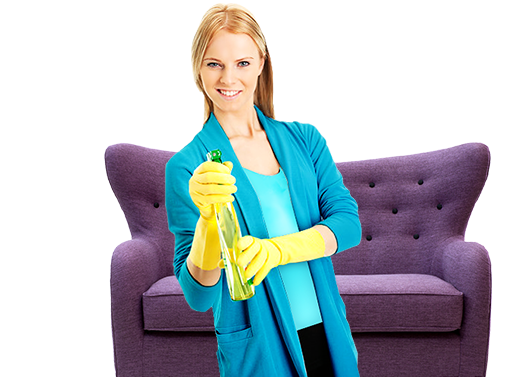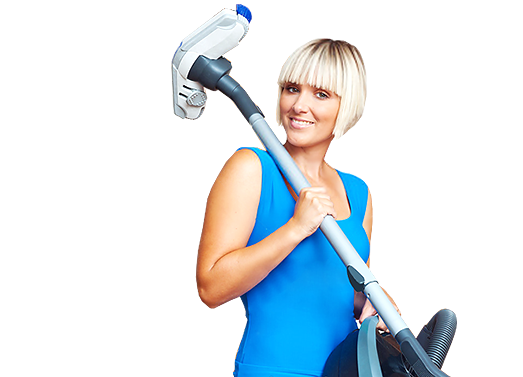Innovative Practices for Minimizing Dust and Allergens
Posted on 23/06/2025
Maintaining a healthy and comfortable indoor environment is essential, especially for those sensitive to airborne particles. In this comprehensive guide, we explore the latest techniques and innovative solutions for minimizing dust and allergens in your living space. By combining advanced technologies with practical strategies, you can significantly improve your home's air quality and safeguard your family's well-being. Discover effective methods to control dust and banish common allergens!
Understanding Dust and Allergens: The Hidden Culprits
Before implementing solutions, it's crucial to recognize what dust and allergens truly are. Dust is comprised of a mix of dead skin cells, fibers, pollen, pet dander, mold spores, and even microscopic creatures called dust mites. Allergens are substances that can cause allergic reactions and can be found in dust, pet hair, pollen, and other common household sources. Knowing this helps in targeting both the sources and the accumulation points for these irritants.
Common Sources of Indoor Dust and Allergens
- Pollen from outdoor plants
- Pet dander and hair
- Mold spores from damp areas
- Textile fibers from furniture and carpeting
- Dead skin cells and house dust mites
- Smoke residue and fine particles from cooking

Smart Cleaning Solutions for Dust Reduction
Cleaning smartly rather than just frequently is the first step in reducing dust and allergens. Here are some innovative practices for achieving a cleaner, healthier home:
1. High-Efficiency Particulate Air (HEPA) Filtration
Invest in a vacuum cleaner equipped with a HEPA filter. These filters are designed to trap 99.97% of particles as small as 0.3 microns, including pollen, pet dander, and dust mites. Some modern air purifiers also use HEPA technology for continuous allergen removal.
- Use HEPA filter vacuums on all floor surfaces, including hardwood and carpet
- Replace or clean filters regularly to maintain optimal performance
2. Robotic Cleaners and Smart Mopping Devices
Leverage the power of robotic vacuums and mops for daily or frequent cleaning. Many models now feature smart mapping, scheduling, and self-emptying options, ensuring dust never has a chance to accumulate. These devices are particularly beneficial for individuals with allergies, as they automate the process and can run when you're not home.
3. Microfiber Cleaning Cloths
Traditional dusters tend to spread particles around rather than removing them. In contrast, microfiber cloths are specifically designed to trap allergens and dust, holding onto even the finest particles. Use them slightly damp for best results, and wash frequently to avoid reintroducing allergens back into your environment.
4. Wet Cleaning and Mopping Practices
Dry sweeping and dusting often send allergens airborne. Switch to wet cleaning techniques:
- Use a damp mop on hard floors such as tile or wood
- Wipe surfaces with moist cloths to capture instead of scatter dust
Managing Humidity and Airflow to Reduce Allergens
Controlling your home's humidity and airflow is pivotal in minimizing airborne particulates. Excessively dry or humid air can both exacerbate allergy problems and encourage dust accumulation. Consider these strategies:
5. Dehumidifiers and Humidifiers
Maintain indoor humidity between 30% and 50%. Low humidity reduces dust mites and mold growth, while high humidity can encourage allergens. Smart humidification systems automatically adjust levels, and some even double as air purifiers.
6. Proper Ventilation Systems
Good ventilation is key to reducing indoor allergens. Install heat recovery ventilators (HRV) or energy recovery ventilators (ERV) to bring in fresh air while filtering out irritants. Bathroom and kitchen exhaust fans also play important roles in managing moisture and airborne particles.
- Open windows during low pollen seasons for fresh airflow
- Regularly maintain HVAC systems and replace filters
Innovative Products for Allergen Management
Advances in technology have led to sophisticated tools for controlling dust and allergens:
7. Air Purifiers with Advanced Filtration
Modern air purifiers combine HEPA filters with activated carbon, UV, or ionization technology. They efficiently trap and neutralize airborne allergens, dust, and odors. For allergen-sensitive rooms, choose units with a coverage area suited to your space and verified performance certifications.
8. Hypoallergenic Bedding and Mattress Encasements
Beds are ideal habitats for dust mites. Innovative hypoallergenic mattress and pillow encasements provide a barrier, drastically reducing allergen exposure. Materials engineered to block particles without sacrificing comfort are now widely available.
9. Smart Home Air Quality Monitors
Today's smart monitors provide real-time air quality readings, detecting particulate matter, VOCs, humidity, and more. Some connect to your phone, enabling you to make informed adjustments to your cleaning or filtration routines for optimal dust and allergen control.
10. Anti-Allergen Sprays and Treatments
Specialized sprays can neutralize allergens on soft furnishings, carpeting, and pet bedding. Some products use botanical ingredients or advanced chemistry to lower allergen levels, making them safer for children and pets.
Modern Interior Choices That Lower Dust and Allergen Exposure
The design and materials within your home play a huge role in reducing dust and allergens:
11. Flooring Choices
- Hard surface flooring--such as laminate, wood, or tile--collects less dust and is easier to clean than carpets. If rugs are necessary, opt for washable options and clean them frequently.
- If you have carpet, choose low-pile varieties and vacuum with a HEPA filter at least twice a week.
12. Minimalist and Easy-to-Clean Decor
- Keep surfaces clutter-free to prevent dust build-up.
- Choose furniture and decor with smooth, wipeable surfaces rather than intricate designs that trap dust.
13. Washable Window Treatments
Fabric curtains and blinds collect dust over time. Replace with washable varieties or opt for shutters and blinds made from materials that are easy to wipe down weekly.
Pet Care Strategies for Allergy Control
If you have pets, they can be a source of both joy and allergens. Implement these pet-specific dust reduction strategies:
- Groom pets regularly--preferably outside--using anti-allergen pet shampoos and brushes designed to reduce shedding.
- Keep pets out of bedrooms and off upholstered furniture to reduce dander accumulation.
- Vacuum areas your pets frequent daily with a HEPA vacuum.
- Clean pet bedding, toys, and feeding areas weekly.
Preventive Maintenance for Dust and Allergen Minimization
Some of the best steps for minimizing dust and allergens are preventative:
- Seal cracks and openings in walls, around windows, and doors, where dust and pollen might enter.
- Install high-quality air filters in your HVAC system and replace them routinely.
- Keep entryways clean by using doormats and regular shoe cleaning. Consider a shoe-free indoor policy to limit tracked-in allergens.
- Inspect for leaks and repair promptly to prevent mold growth, one of the most potent indoor allergens.
Lifestyle Tweaks for a Low-Allergen Home
Certain habits make a significant difference in controlling dust and allergy symptoms:
- Launder bedding, curtains, and throws weekly in hot water to kill dust mites.
- Store clothing, bedding, and linens in sealed containers or closets.
- Choose building and decor materials that are labeled "hypoallergenic" or easy to clean.
Allergy-Friendly Home Plants
Select indoor plants that filter air without producing excess pollen, such as snake plants, peace lilies, or spider plants. Avoid high-pollen houseplants, which may worsen indoor allergy symptoms.
Cutting-Edge Technologies for the Future
Emerging solutions hold promise for even more effective allergen minimization:
- Photocatalytic oxidation air purifiers that destroy allergens at a molecular level
- Nanotechnology coatings for surfaces that repel dust and inhibit mold growth
- Smart home integrations for synchronized cleaning and air quality control
- Self-cleaning fabrics and textiles for furniture and bedding

Building a Personalized Allergy Prevention Plan
Every home and family is unique. The most effective strategy combines innovative cleaning practices with modern technology and preventive design choices. Start by identifying your biggest problem areas--such as pet dander, mold, or outdoor pollen--and then select the approaches best suited to your lifestyle and space.
Conclusion: Breathe Easier With Innovative Dust and Allergen Control
Living in an environment with minimal dust and allergens is increasingly possible thanks to modern advancements. By integrating smart cleaning systems, preventive maintenance, and the latest air purification technologies, you can foster a healthier, more comfortable living space for everyone. Remember, the key is consistency--regularly using these innovative practices for reducing dust and allergens will give you long-term relief and peace of mind.
- Incorporate smart cleaning devices and effective air filters
- Design your home with allergy-reducing materials and minimal clutter
- Monitor your indoor air for dust and allergen levels
- Prioritize preventative maintenance and healthy living habits
Implementing these comprehensive and innovative methods will create a safer, cleaner, and healthier home, helping you and your loved ones breathe easier every day.





